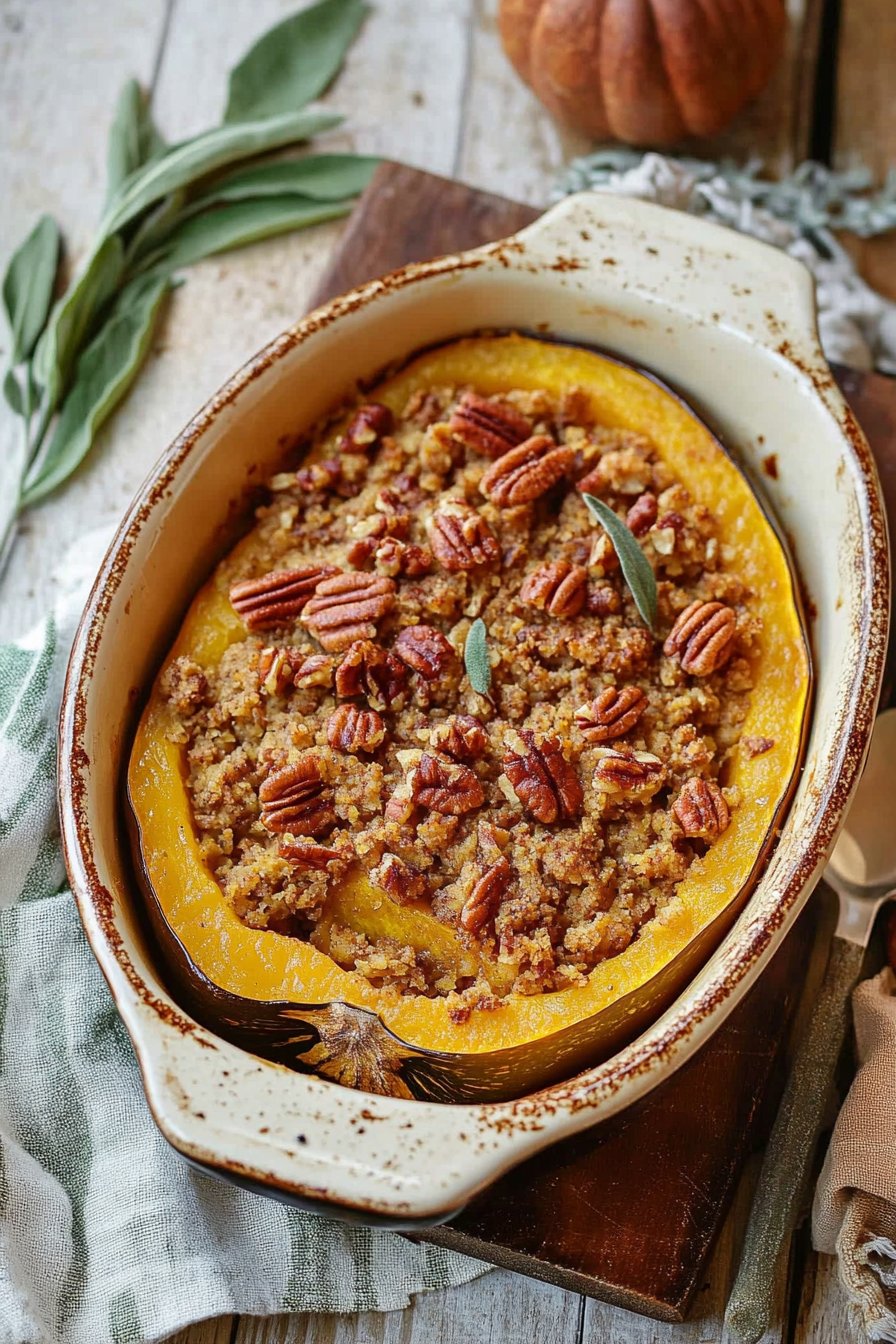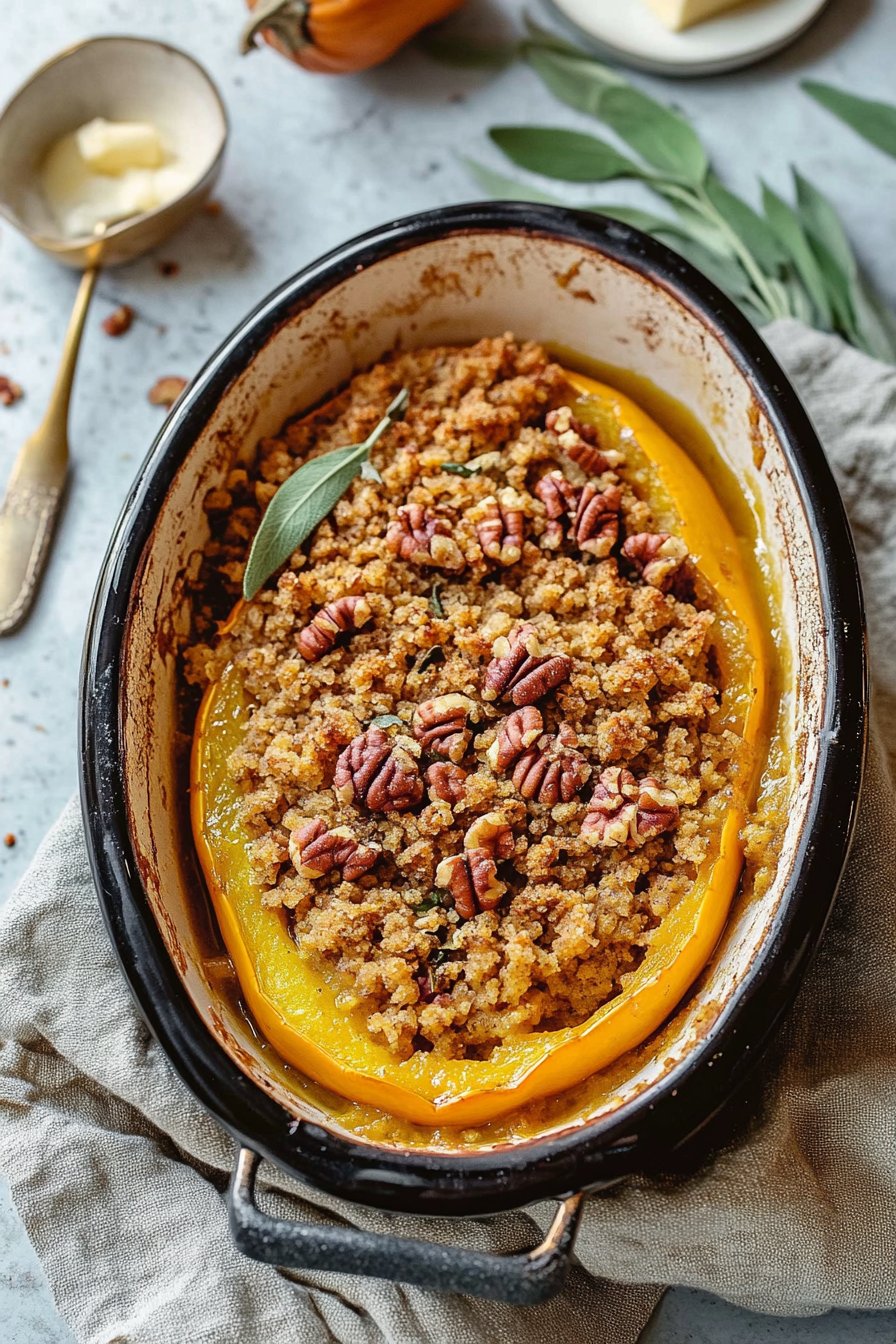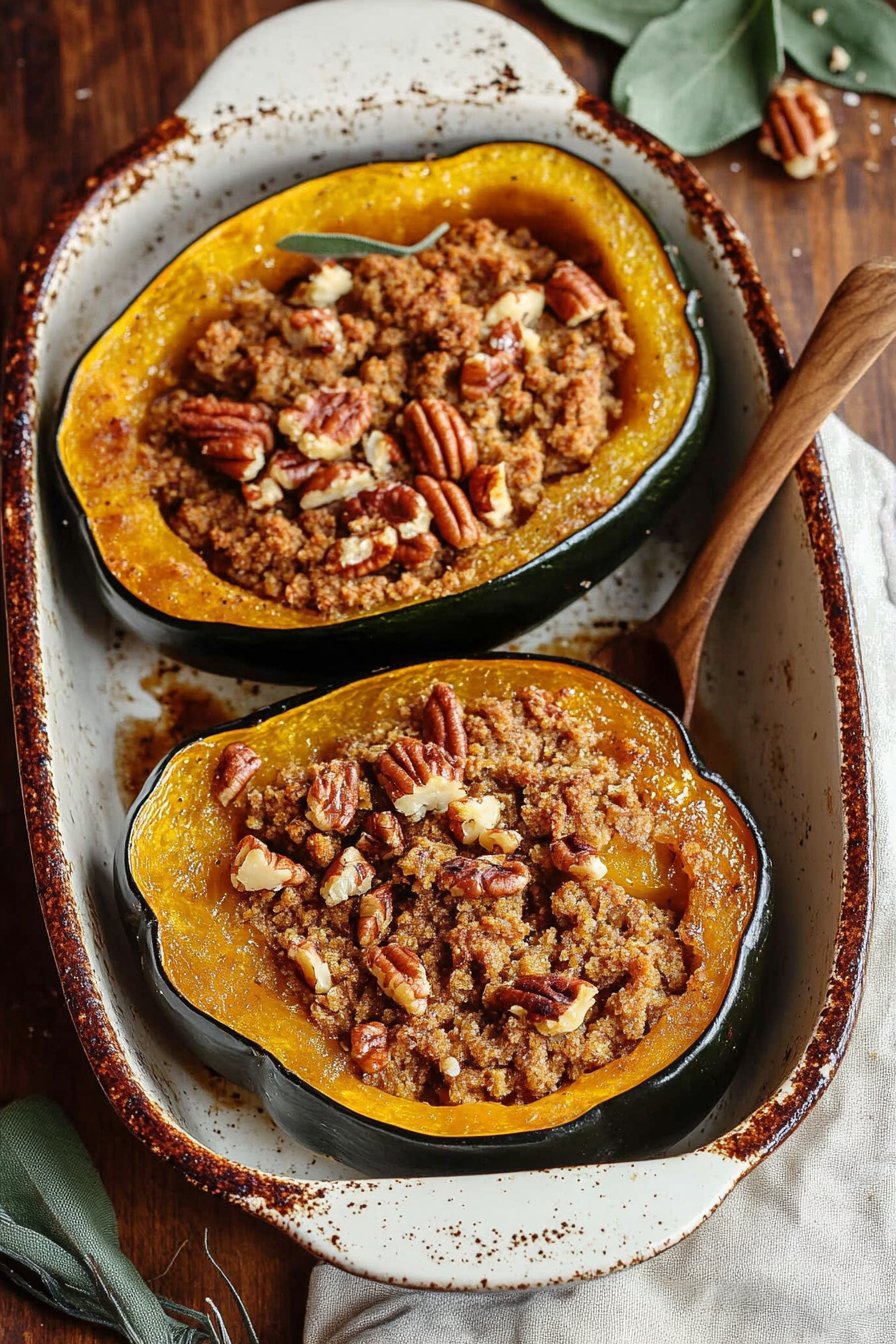Acorn Squash Casserole Recipe – A Delicious Fall Dish
Acorn Squash Casserole is a delightful and comforting dish that brings the flavors of fall straight to your table. This dish, featuring the nutty and slightly sweet acorn squash, is both nutritious and versatile, making it an ideal choice for cozy dinners or holiday gatherings.
The humble acorn squash, native to North America, has been a staple in many seasonal recipes for its rich taste and health benefits. When combined in a casserole, it becomes a hearty meal that warms the soul and pleases the palate.
Casseroles have been a beloved method of cooking across cultures, known for their ability to blend flavors and textures seamlessly. The acorn squash, in particular, complements a variety of ingredients, from savory sausages and creamy cheeses to crunchy nuts and aromatic herbs.
This makes the Acorn Squash Casserole not only a delicious choice but also an adaptable one, suitable for various dietary preferences and occasions. For further insights on the historical significance of squash in culinary traditions, you can explore more on Smithsonian Magazine's website that discusses the origin and cultural impact of squash varieties.
Ingredients for Acorn Squash Casserole
- 2 medium acorn squashes, halved and seeded
- 2 tablespoons olive oil
- 1 medium onion, chopped
- 2 cloves garlic, minced
- 1 pound Italian sausage, crumbled
- 1 cup cooked quinoa
- 1/2 cup grated Parmesan cheese
- 1/4 cup heavy cream
- 1 teaspoon salt
- 1/2 teaspoon black pepper
- 1 teaspoon dried thyme
- 1/2 teaspoon nutmeg
- 1/2 cup breadcrumbs
- 2 tablespoons melted butter
- 1/4 cup chopped parsley for garnish

Instructions for Making Acorn Squash Casserole
- Preheat the oven to 400°F (200°C).
- Place the acorn squash halves cut side down on a baking sheet and roast for 30 minutes or until tender.
- While the squash is roasting, heat olive oil in a large skillet over medium heat.
- Sauté the chopped onion and minced garlic until the onion is translucent.
- Add the crumbled Italian sausage to the skillet and cook until browned.
- Stir in the cooked quinoa, Parmesan cheese, heavy cream, salt, pepper, thyme, and nutmeg.
- Once the squash is done, scoop out some of the flesh, leaving a firm border, and mix it into the sausage mixture.
- Fill each squash half with the sausage mixture evenly.
- In a small bowl, combine breadcrumbs and melted butter. Sprinkle this mixture over the stuffed squash.
- Place the stuffed squash back into the oven and bake for an additional 15 minutes or until the top is golden brown.
- Remove from the oven, sprinkle with chopped parsley, and serve warm.

Nutritional Information
Acorn squash is not only a delightful ingredient in casseroles but also a powerhouse of nutrition. This winter squash is rich in vitamins A and C, providing a boost to your immune system and supporting eye health.
It is also a good source of dietary fiber, which aids in digestion and helps maintain a healthy weight by keeping you full longer. The addition of protein-rich components such as Italian sausage and quinoa makes this casserole a balanced meal.
Quinoa is a complete protein, containing all nine essential amino acids, and is gluten-free, making it suitable for those with gluten sensitivities. Furthermore, the use of Parmesan cheese adds a dose of calcium, which is crucial for bone health.
For those interested in learning more about the health benefits of acorn squash, you can visit Healthline for comprehensive nutritional information.
Wine/Beverage Pairings With Acorn Squash Casserole
Pairing the Acorn Squash Casserole with the right beverage enhances the dining experience. A medium-bodied white wine such as Chardonnay or Viognier complements the creamy and nutty flavors of the casserole beautifully.
For those who prefer red wine, a light Pinot Noir provides a nice contrast to the dish's richness without overpowering it.
If you’re looking for a non-alcoholic option, a sparkling apple cider or a ginger-infused iced tea makes a refreshing match, adding a touch of sweetness that balances the savory elements of the casserole.
Cooking Tips and Variations
When making Acorn Squash Casserole, consider a few variations and tips to personalize the dish to your taste. For a vegetarian version, omit the sausage and add more vegetables like mushrooms, spinach, or bell peppers. You can also use a plant-based sausage alternative for a similar protein boost.
If you prefer a sweeter note, try adding a handful of dried cranberries or a drizzle of maple syrup to the filling. To save time, prepare the quinoa in advance or substitute it with cooked rice or farro.
The breadcrumbs can be swapped with crushed nuts like pecans or walnuts for a crunchy topping that adds flavor depth. When selecting acorn squash, look for ones that are heavy for their size with a hard, dull skin, indicating ripeness and a tender interior.
Remember, the key to a perfect Acorn Squash Casserole is balancing the flavors and textures, ensuring each bite is a delightful blend of savory, sweet, and creamy.

Serving Suggestions
Acorn Squash Casserole is an ideal dish for various occasions, from weeknight dinners to festive holiday spreads. When serving, consider the aesthetics and balance of your meal. Present each roasted squash half on a decorative platter garnished with fresh parsley or thyme sprigs for a touch of color and freshness.
Pair the casserole with a simple side salad of mixed greens dressed in a light vinaigrette to add a refreshing crunch and cut through the richness of the dish.
A warm baguette or rustic bread served alongside can round out the meal, perfect for sopping up any delicious juices from the casserole. For a complete autumn-inspired meal, consider serving roasted Brussels sprouts or glazed carrots as an additional side.
The natural sweetness of these vegetables complements the savory elements of the casserole, creating a harmonious and satisfying dining experience. Whether enjoyed as a main course or a hearty side dish, Acorn Squash Casserole brings warmth and seasonal flavors to your table.
Acorn Squash Casserole Health Benefits
Acorn Squash Casserole offers numerous health benefits, making it a nutritious addition to your diet. Acorn squash itself is low in calories yet packed with essential nutrients like vitamin C and beta-carotene. These antioxidants play a crucial role in reducing inflammation and boosting immune function.
The dietary fiber content in acorn squash aids in digestion and helps regulate blood sugar levels, making it beneficial for those looking to maintain a healthy weight. The inclusion of quinoa not only adds protein but also provides iron and magnesium, supporting energy production and bone health.
Using olive oil as a cooking fat introduces healthy monounsaturated fats, which are heart-friendly and can help lower bad cholesterol levels. For those who prefer a lower-fat option, reducing the amount of cheese or using a low-fat alternative can decrease the calorie content while still delivering great flavor.
By adapting the ingredients to personal dietary needs, such as using a plant-based sausage, this casserole can easily fit into various healthy eating plans, offering both taste and nutrition.
FAQs About Acorn Squash Casserole
Can I make Acorn Squash Casserole ahead of time?
Yes, you can prepare the casserole up to the point of baking and refrigerate it for up to two days. When ready to serve, bake it in the preheated oven until heated through and the topping is golden brown.
What can I use as a substitute for quinoa?
If you don't have quinoa, you can substitute it with cooked rice, farro, or couscous. These grains will provide a similar texture and absorb the flavors of the casserole well.
How can I make this casserole vegan?
To make the casserole vegan, replace the sausage with a plant-based alternative, use non-dairy cheese, and substitute heavy cream with coconut cream or a similar vegan option.
Acorn Squash Casserole is a versatile and comforting dish that highlights the rich flavors of fall ingredients. Whether you're serving it as a main dish or a side, this casserole is sure to impress with its combination of textures and tastes. By following the tips and variations provided, you can customize the recipe to suit your dietary preferences and make it a staple in your seasonal cooking repertoire. Enjoy the warmth and nourishment of this delicious dish, perfect for cozy evenings and festive occasions alike.







